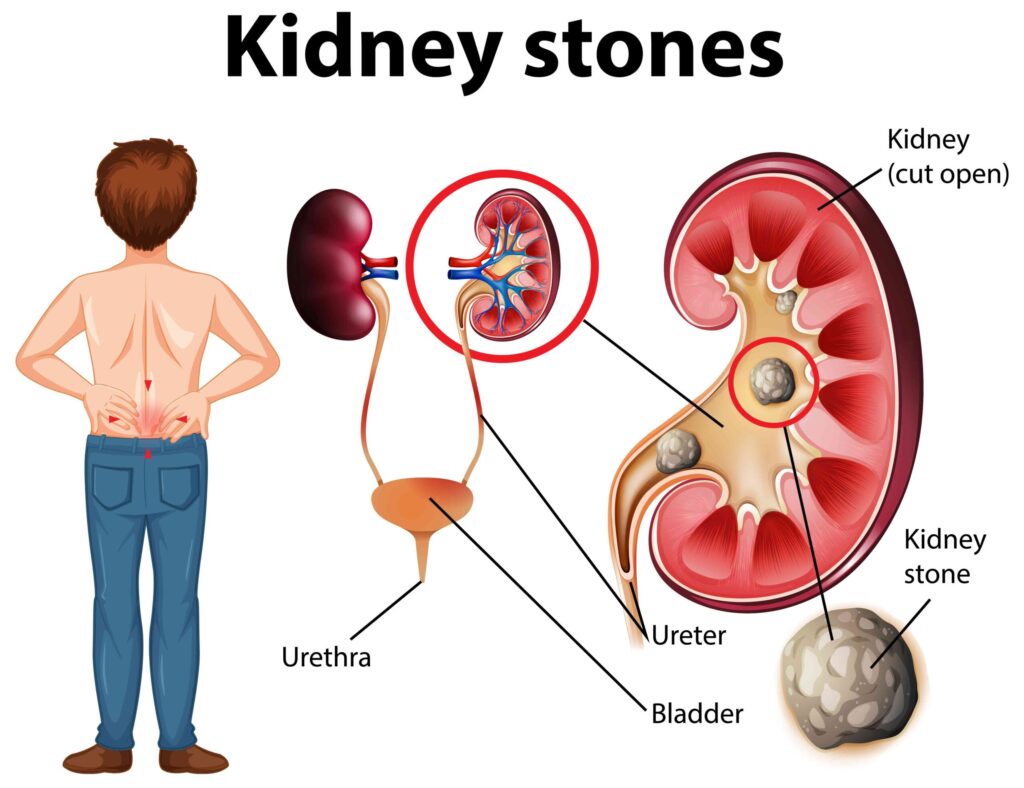

Kidney Stone Treatment: Options, Procedures, and Prevention
Kidney stones are hard mineral deposits that form in the kidneys, causing significant pain and discomfort as they move through the urinary tract. Treatment for kidney stones depends on the size, type, and location of the stones, as well as the symptoms they cause. Below, we explore treatment options, from conservative management to surgical interventions.
1. Understanding Kidney Stones
Kidney stones are composed of different minerals and salts, the most common being calcium oxalate. Stones can vary in size and may remain in the kidney or move into the ureter, the tube connecting the kidney to the bladder. This movement often causes pain, blockage, and other urinary symptoms.
2. Symptoms of Kidney Stones
Symptoms include:
- Severe pain in the back, side, or lower abdomen
- Blood in urine (hematuria)
- Nausea and vomiting
- Frequent urination
- Pain during urination
- Fever and chills (if infection is present)
3. Diagnosis
Diagnosis usually involves:
- Imaging tests: CT scans, ultrasounds, or X-rays to determine stone size and location.
- Urinalysis: Identifying infections or substances that can form stones.
- Blood tests: Measuring calcium, uric acid, and other substances.
4. Treatment Options for Kidney Stones
A. Conservative Treatment
Small stones often pass on their own and can be managed with conservative methods, which include:
- Increased Water Intake: Drinking enough water to produce at least 2 liters of urine per day can help flush out smaller stones.
- Pain Management: Over-the-counter pain relievers like ibuprofen or acetaminophen can help manage the pain.
- Medications: Doctors may prescribe alpha-blockers to relax the muscles in the ureter and facilitate stone passage.
B. Medical Procedures for Larger Stones
When stones are too large to pass naturally or cause persistent symptoms, medical procedures may be necessary:
- Extracorporeal Shock Wave Lithotripsy (ESWL)
- ESWL uses sound waves to break large stones into smaller pieces that can pass through urine.
- It is non-invasive, but some discomfort may be felt during the procedure.
- This is suitable for stones less than 2 cm in size.
- Ureteroscopy
- In this procedure, a thin scope is inserted through the urethra and bladder into the ureter to locate the stone.
- The stone may be removed using a small basket, or it can be broken down with a laser.
- This is particularly useful for stones lodged in the ureter.
- Percutaneous Nephrolithotomy (PCNL)
- PCNL is a minimally invasive surgery performed when ESWL or ureteroscopy is not effective.
- A small incision is made in the back, and an instrument called a nephroscope is used to remove the stone.
- This is effective for large stones or complex cases.
- Open Surgery
- Open surgery is rarely needed today, as less invasive techniques are generally sufficient.
- It may be used when other methods fail or in patients with complicated kidney anatomy.
5. Prevention of Kidney Stones
Preventive strategies can help reduce the risk of recurrence:
- Hydration: Drinking enough water daily dilutes urine, preventing stone formation.
- Dietary Modifications: Reducing salt, oxalate-rich foods (e.g., spinach, nuts), and animal protein can help.
- Medications: Certain medications may be prescribed to prevent stones, particularly in patients prone to recurrence.
6. Conclusion
Kidney stones can be painful and recurrent, but various treatment options exist, from natural passage to advanced surgical methods. Consulting a healthcare provider for appropriate diagnosis and treatment is essential for effective management and long-term prevention.